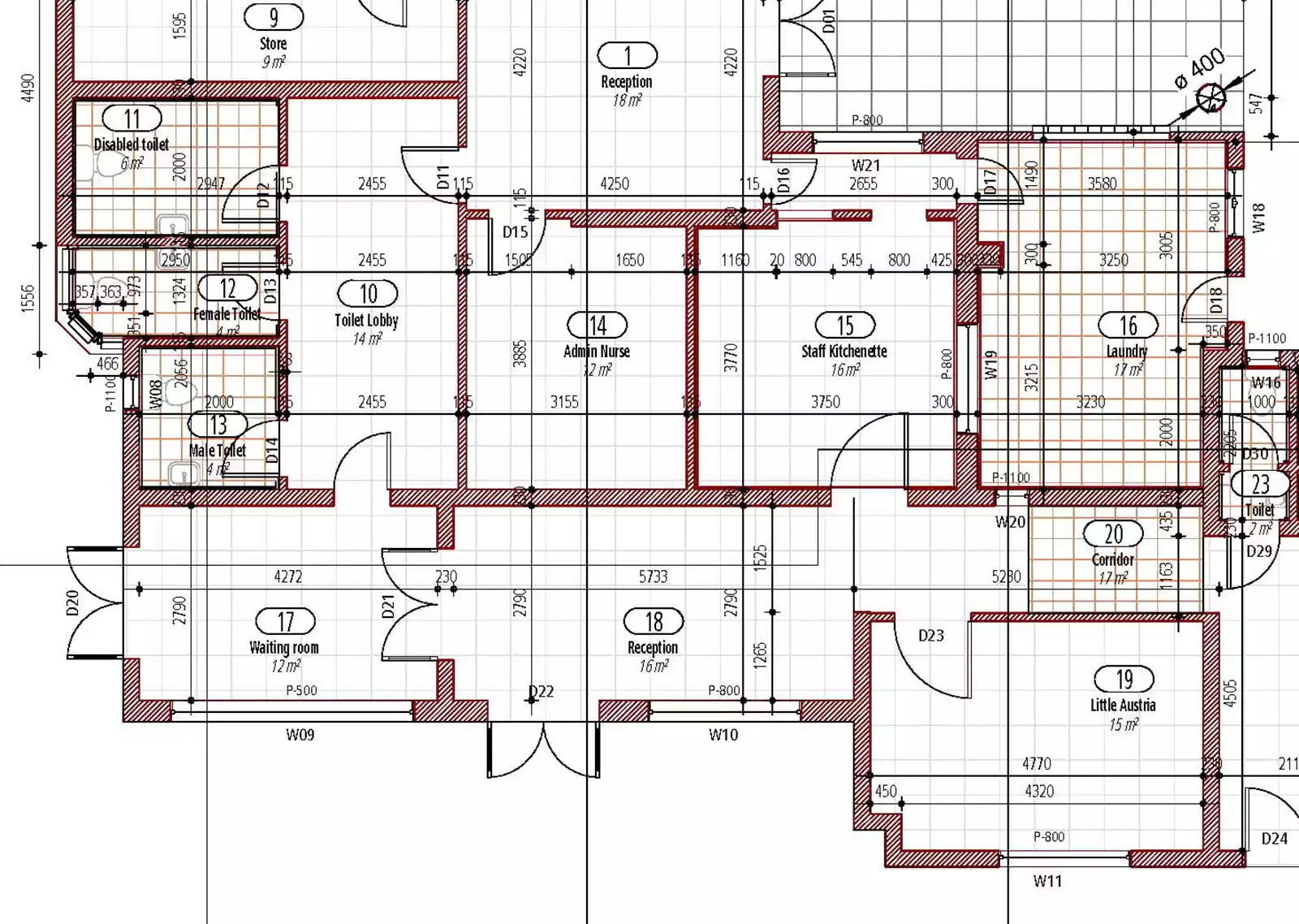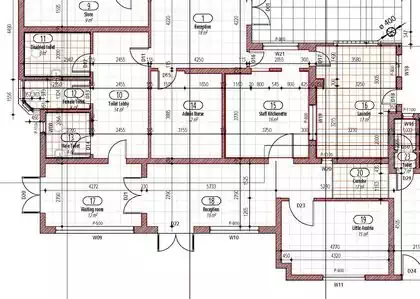Harare Clinic design

Clinic architecture in Zimbabwe
Successful medical practioners Djordjevic needed for a more permanent private location for their medical clinic chambers in Harare. They decided to convert an existing house in the Avondale residential area into their new clinics. Dr M Djordjevic's needed a smaller, state of the art dental clinic, while his wife, Dr D, has a larger obstetric clinic where patients come in accompanied by relatives and friends. Pantic Architects were called in as clinic architects to channel their specific functional needs into fully operational clinic architecture.
Clinic design
The clinic design brief called for the integration of the two clinics while at the same time keeping them separate. Common facilities like entrances, receptions, toilets, tea kitchen, accounting, etc would be shared while the intervention and procedure rooms would be in their own wings. Future considerations of expansion into a fully functional operating theatre and various testing labs had to be catered for as well. The clinic design approach focused on the well-being of the visitors and patients together as of the staff. Green areas and views of outside nature were created both in the reception areas as well as in the dental surgeries so that patients would relax and feel at ease while waiting or being treated. The obstetric side called for more privacy and was treated so. Lastly, patient and staff parking had to be addressed as well during the clinic design. A net separation of the treatment areas and waiting and accounting zones improved functionality and efficiency while preparing and guiding the patients mentally for the oncoming steps. All these design considerations had to be integrated into the existing house and attempt to minimise interventions on the existing structure.
Clinic layout and organisation
VIsitors parking was provided for outside the property and also within the garden, in front of the main building. The entrance area was located in the corner of the house providing access to the two separate receptions of the two clinics overlooking an external green area. From these waiting areas the dental clinic developed along the side of the building with the operating rooms at the back of the house, overlooking the internal garden. Thus the clinic was detached and had a stunning view of vegetation providing a private, welcoming atmosphere to patients. The obstetrician's clinic was designed to follow the front and other side of the building as the existing rooms were larger and had en-suite toilets that are a necessity for these medial intervention rooms. While having plenty of light, the window glass was made opaque to provide privacy due to the intimate nature of the examinations. The common facilities: toilets, tea kitchen, accounts were all grouped in the centre of the building providing access to both clinics. The full operating theatre together with the recovery room and necessary change and preparation rooms was planned under the covered veranda. In this way, an independent access would be provided to the theatre from the side of the building, both as access for patients and medical staff as well, without disrupting the two working clinics.
Health Institution registration
The clinic design was carefully done in accordance with the requirements of the Health professions Authority of Zimbabwe. The clinics and all spaces were designed and built to meet and surpass all the criteria set to be able to register the health institutions with the Health authorities. These especially concern the minimum requirements of the Dental consultation rooms and the Medical Consulting rooms in the two clinics and the minimum requirements for the Theatre. These standards deal not only with the sizes and specifications of all the rooms required, but also the finishes on the floors and necessary equipment in order to obtain registration. The clinic design met the requirements and both clinics have been successfully registered with the Health authorities and are renewing their registration annually.
Converting a house into a clinic
Converting an existing building into a different function always poses challenges. Changing this house from residential use to a clinic posed common challenges that need to be addressed during the design stage and then subsequently during construction. The priority was to try to maintain as many of the existing load-bearing walls so that structural interventions would be minimal and relatively painless. All new walls were planned to be half-brick walls so that no new foundations would have to be dug and created, disrupting the existing floors and finishes. Extensions to the existing footprint are also complicated due to the desire to keep existing roofs and avoid problems with stormwater drainage. To cater for all these conversion problems and also to make sure that institutional registration happens at the end of the construction, it is always best to engage a registered architect. Another example of a conversion an addition was the Borrowdale Trauma hospital design. Both healthcare facilities have now been operating successfully for many years and the clinic design seems to have resonated well with the public and practitioners involved as have other architectural designs of Pantic Architects.


